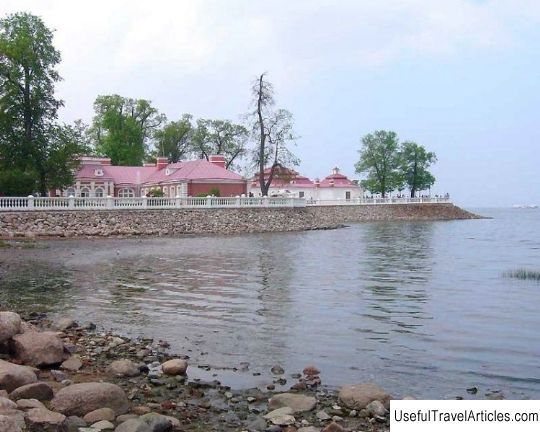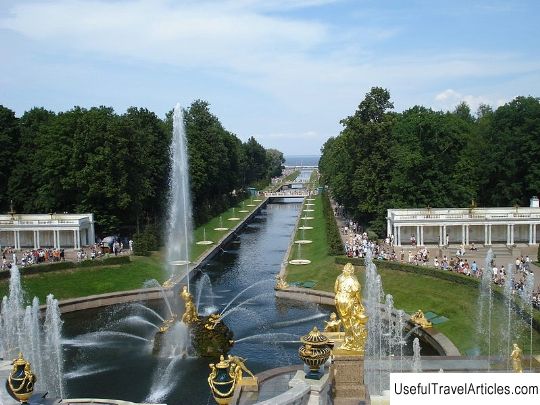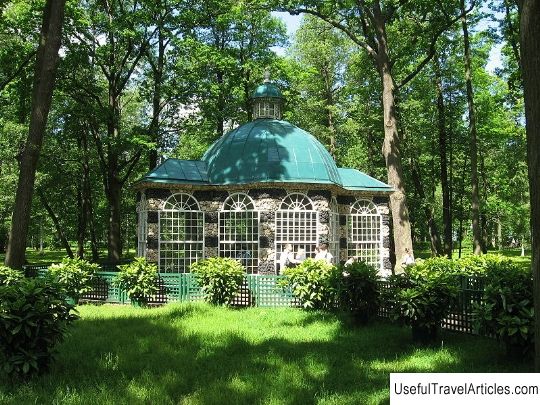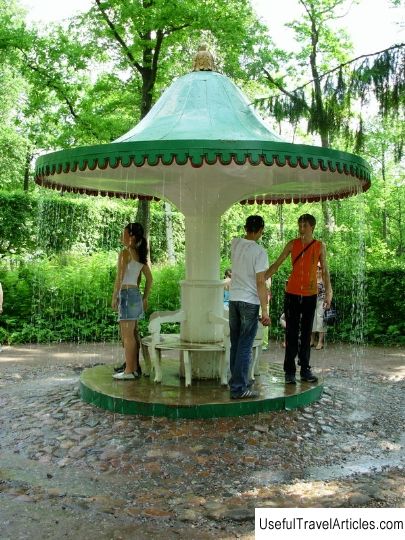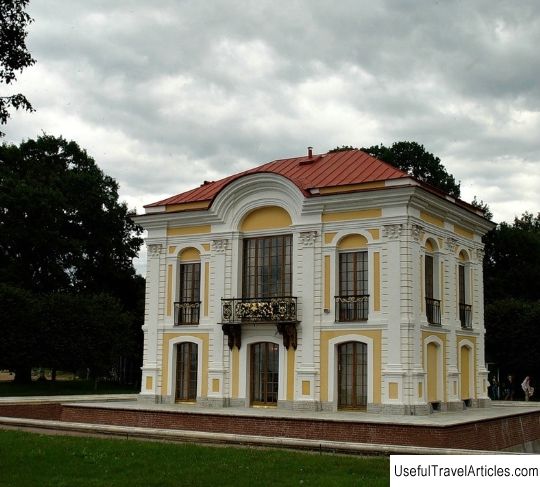Bath building of the Monplaisir palace description and photo - Russia - St. Petersburg: Peterhof
Rating: 8,9/10 (690 votes) 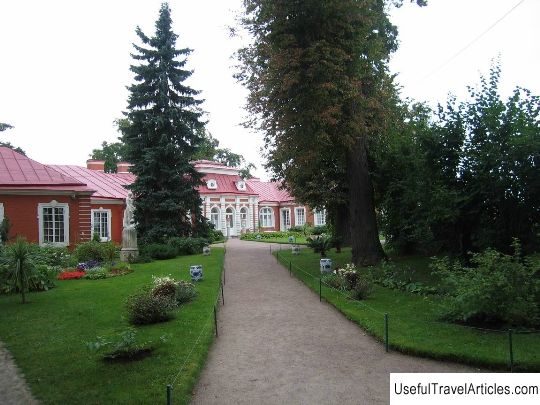
Bath building of the Monplaisir palace description and photos - Russia - St. Petersburg: Peterhof. Detailed information about the attraction. Description, photos and a map showing the nearest significant objects. Photo and descriptionThe Bath Building is a one-storey building with a hipped roof. From the side of the Monplaisir Garden, it adjoins the eastern wing of the Monplaisir Palace. Originally, the Monplaisir estate included baths and baths, built in 1721 - 1722, in addition to other economic services. In 1748, on the site of a small wooden soap-house of Peter's times, according to Rastrelli's project, a new one was built, where a crystal bath was inserted into a copper case. In 1765, work began on the construction of a pool with a rising bottom, into which sea water from the bay. Fresh water was supplied from the peasant fountain located in the center of the pool. Construction work was completed only in the 70s. 18th century, when pipes were laid along the perimeter of the octahedral bowl of the pool, from which water came. Somewhat later, in 1800, the figure of the "peasant" was replaced with a tall golden column topped with a ball from which trickles of cold water burst. In addition to the room with a shower and a swimming pool, the Banny Wing had rooms for a Russian bath with shelves and cold baths, as well as a hallway and toilet. In 1865 - 1866. on the site of the wooden Bathhouse, a stone one was built according to the project of the architect E. Gann. To the east, it was adjoined by the Chinese Garden, designed in landscape style in 1866 by the same architect who was involved in the construction of the building. The flat relief of the garden enlivens an artificial hill. At the top of the hill there is a sculptural composition "Cupid and Psyche", which is a copy of the original by A. Canova. The Chinese Garden offers a wonderful view of the bay. On the northern side of the hill is a tuff grotto, from which two marble steps, resembling sea shells, lead. From the grotto, a rushing stream of water flows down the openwork edges of the shells and fills a small pond with a tuff island with a stream of water gushing in the center. This cascade is called the Sink. Marble statues and winding paths, a stream through which humped bridges and flower beds are thrown - all this creates an atmosphere of comfort and tranquility and gives the Chinese garden a special flavor. In the Bathhouse there are rooms with a warm and cold bath, shower and steam room. The exposition of the Bath Building acquaints visitors with the unique interior decoration, typical for the eclectic style, with objects of decorative and applied art of the 2nd half of the 19th century. household use, among which is a rare water-operated shower chandelier. After the restoration in 2005, the last stage of the Bath building was opened, called the Soap House for Cavaliers and Maids of Honor. Visitors to the Peterhof park only recently learned what the imperial Povarnya and Soapyas looked like. Today, the Museum of Tsarist Life in the Baths Building near Monplaisir is no less popular than the famous Peterhof palaces. The restoration of the Bath building was funded by a sponsor from Holland. The stone soap-house was built according to the project of Quarenghi in 1800. Seventeen years later, major repairs were made in this bath, in which the Empress Maria Feodorovna washed. And in the 19th century. there was a soaphouse for gentlemen and maids of honor. Three restored rooms are provided to the attention of museum visitors - a steam room, a relaxation room, a swimming pool. In the pool, numerous jets beat from above and below, forming a dense water curtain. In the maid of honor there are three baths of different types. At the time of Peter I, it was fashionable to do the procedure of "opening the blood". And they did it in the bath. Every visitor to the museum can see here simple tools for this procedure - a tray and a knife with which they bled. And the silver scraper, which is presented here, was intended for cleaning the tongue (there was also such a hygienic procedure). Peter I went to the bathhouse once a week, he loved to take a steam bath and, if necessary, used the bloodletting procedure, and also took a remedy from crushed wood lice and worms - a medicine, used in the treatment of many diseases. Peter's wife also attended the Russian bathhouse, but separately from her husband on other days. Visitors to the Bathhouse building can see how Peter received guests in one of the rooms of the guest gallery. And in the “hotel” room everything is simple and modest: a chest of drawers, a bed, a washbasin, a wardrobe. During the restoration of the Bathhouse, the pipes of the first public toilet in Russia were discovered, and visitors to Peterhof can see with their own eyes a monument to the sewage system of Peter the Great ...           We also recommend reading Cambridge University description and photos - UK: Cambridge Topic: Bath building of the Monplaisir palace description and photo - Russia - St. Petersburg: Peterhof. |
